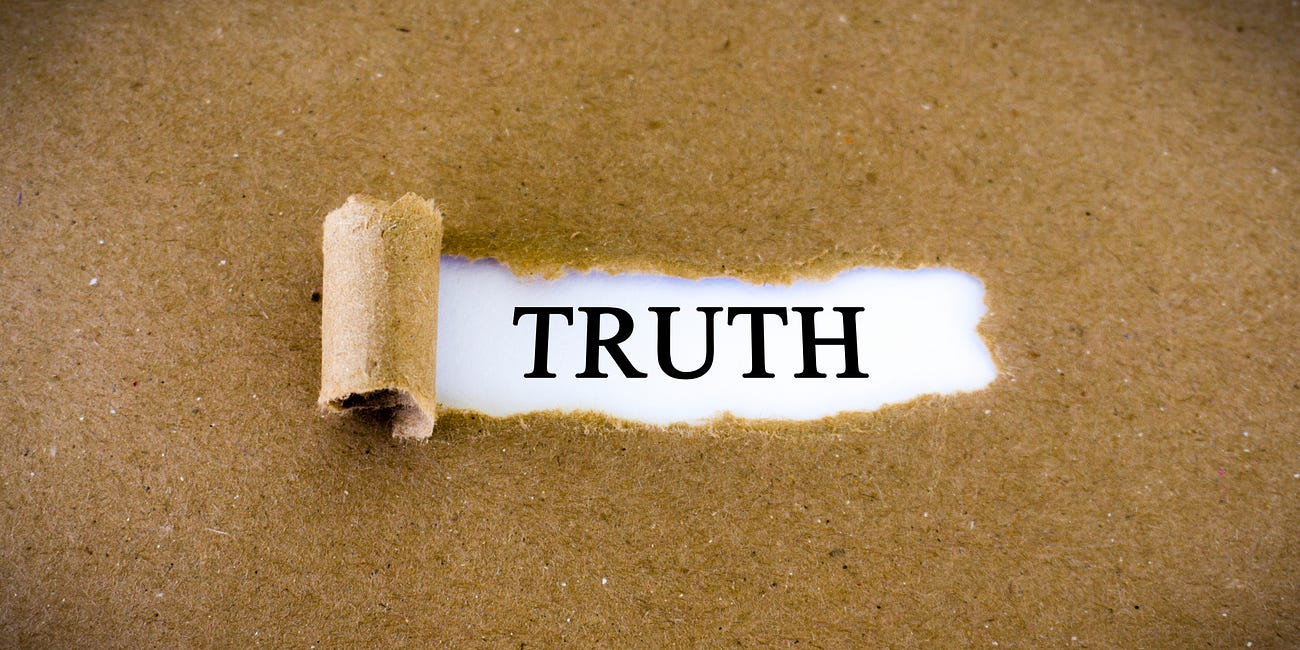This One Habit Could Change Everything - But You're Probably Ignoring It
The single biggest problem in communication is the illusion that it has taken place — George Bernard Shaw
My professional mission is this — to ignite business leaders and teams to build businesses and teams that win. These businesses are:
Vital to their customers
World-class operators
Systematic innovators
Have top-quartile financial results.
This is a winning business.
There’s an extensive playbook which goes into building the organization to achieve this, but that playbook has a few cross-cutting habits.
We all have access to this habit, but only a few decide to develop it and grab the benefits. That habit?
writing + debating
Writing a quality memo about the situation, plan, problem or proposal
Debating after reading the memo.
It is a different way of working. It is not simple, but it also is not complex — it takes intent, practice and not settling for mediocrity.
Want to operate a better business in 2025 and beyond? Want to tackle the wicked problems holding you back? Want to be a disrupter in your industry? Want to supercharge your effectiveness and career? Here’s the advice I always give
— write it out. And then let’s beat it up. Iterate.
It’s time to put some mojo back into your superhero costume! Here’s some tips and practices to develop this habit of writing + debating.
Writing for Impact: The Art of Clarity
Memo writing is an underestimated art—an exercise in precision, storytelling, and clarity that separates great leaders from the rest. It’s no coincidence that some of the most successful organizations, like Amazon, have institutionalized writing as a leadership discipline. Drawing from the principles in Big Bet Leadership and my own experiences, here’s how to master memo writing and why it’s foundational for driving a business that wins.
Why Memos Matter
Memos bring order to complexity, clarify strategic thinking, and align teams on shared outcomes. In a fast-moving, hyper-digital era, where ambiguity can derail progress, a well-crafted memo is an antidote to confusion. In Big Bet Leadership, memos are positioned as the cornerstone of “Thinking in Outcomes”—a systematic way of understanding problems, defining future states, and addressing risks.
Great memos focus teams, guide decisions, and foster clarity across stakeholders. But achieving this clarity takes discipline. Let’s explore the methods and habits that produce powerful memos, with specific techniques and lessons from both Big Bet Leadership and Amazon’s renowned writing practices.
Start With the End in Mind
We have a technique at Amazon called ‘work backwards.’ We start with the customer and we work backwards. We don’t ask what are we good at and what else can we do with that skill. Instead, we ask what does the customer need, and we work backwards from there. — Jeff Bezos
Amazon leaders “start with the end and work backwards.” The answer to a question—or the goal of a memo—should lead to clarity on the problem or situation, and the envisioned customer experience or operational experience. Readers need to immediately understand the situation, outcome, decision, or recommendation at stake.
In memo writing, this means structuring your narrative to ensure the most critical points stand out. Ask yourself:
- What is the reader’s takeaway?
- What decision am I enabling?
- Does my first paragraph deliver the essence of the memo?
In Big Bet Leadership, memos are designed to push teams toward precision. Whether it’s the "What Sucks?" Memo, which articulates customer pain points, or the Outcome Definition Memo, which defines high-risk operating imperatives, every memo has a singular focus: advancing the thinking.
Get all of the Big Bet memo templates here in the free Big Bet Leadership Journal
Write With Radical Clarity
Clarity is a hallmark of effective leaders. As emphasized in Big Bet Leadership, vague notions of future states lead to slow progress and eventual failure. The same principle applies to memo writing. Here are a few strategies to ensure clarity with short sentences that pack a punch:
Write with brevity. Keep sentences under 30 words whenever possible. This forces you to distill complex ideas into digestible statements.
Cluttered: "Due to the fact that our project team was insufficiently staffed and hiring to long, the project timeline experienced significant delays."
Clear: "The project was delayed because the team was short-staffed."
Replace Adjectives With Data
Adjectives like "reduced" or "significant" add no measurable value. Replace them with precise metrics or results. For instance:
- Before: "We made incredible progress in launching our service globally."
- After: "We reduced time-to-launch for a new product line from 22 to 4 weeks, a decrease of 82%."
Let’s connect on your company event or strategic topic. Email me directly. John@rossmanpartners.com
See the “killer offer” at the end of this newsletter.
Avoid Weasel Words
Words like "nearly," "substantially," or "much" introduce ambiguity. Replace them with definitive statements. Instead of “nearly all customers preferred the new feature,” say, “92% of surveyed customers preferred the new feature.”
Identify “Facts” versus “Assumptions”
In many presentations, there is no clarity on the points we know for facts (supported with data), versus the assumptions or guesses being made. Clarify if an assumption is being made and if it is critical, and therefore should be tested in some manner. For instance, in a memo proposing a new product launch:
- Bad: “We think this market will grow exponentially.”
- Good: “Market analysis suggests a 35% CAGR over the next three years. We need further validation on customer willingness to pay, which we will provide by [date].”
Think Narratively
Data alone doesn’t persuade—it informs. What assists in understanding the entire situation is a compelling narrative. As outlined in Big Bet Leadership, storytelling is crucial for engaging stakeholders, assisting understanding and embedding ideas. Memos should read like a story, with a clear arc: a problem, a proposed solution, and a call to action.
For example, the "What Sucks?" Memo starts with vivid descriptions of customer pain points, making the case for a game-changing feature. By the time stakeholders finish reading, they’re fully aligned on the urgency of the problem and its potential solutions.
Create Constraints to Foster Focus
A well-written memo isn’t long—it’s precise. In Big Bet Leadership, the memo templates impose strict space and time-to-write constraints, forcing authors to prioritize only the most valuable insights and avoiding analysis paralysis.
Why constraints work:
- They force clarity of thought.
- They highlight key priorities.
- They prevent readers from wading through unnecessary details.
A six-page memo or a one-page summary shouldn’t be seen as restrictive—it’s liberating. It eliminates clutter and ensures the focus stays on what truly matters.
Iterate Relentlessly
The only kind of writing is re-writing — Ernest Hemingway
A master storyteller, Mike Duffy, recently reminded me of this Hemingway quote. The first or second version of your memo, even if you are practiced at this, is typically not ready for executive conversation. Don’t get frustrated. Have a high bar of excellence for your finished product.
Good memos aren’t written in one sitting. They’re crafted, debated, and refined. Bezos emphasized this at Amazon — iteration drives better thinking. Share drafts with trusted colleagues. Seek feedback not just on grammar, but on logic, structure, and impact.
practical tip: read your memo aloud. If you stumble over sentences, they’re likely too complicated. Simplify until the narrative flows naturally.
You are tackling a hard problem or big situation in your memo and trying to convey your thinking to an audience. Remember, “writing is re-writing”.
Read & Debate
It takes the combination of well written memos, and then debating them to get the best thinking, the critical insights, the buy-in we want. It’s called “truth seeking” and this type of conversation goes beyond the mild-mannered politeness, and creates active debate.
Truth-Seeking
The Digital Leader Newsletter — Strategies and Techniques for Change Agents, Strategists, and Innovators
Memo’s should be sent out in advance for reading and processing, or the meeting starts with the right amount of time for everyone to read the memo. Computers and phones put away. Everyone is present and engaged.
Here is Obi-One Kenobi himself, Jeff Bezos, in a recent conversation with Lex Fridman, on the power of meetings driven by memos:
Foster a devils-advocate approach to discussion. This takes maturity, vulnerability and critical thinking. Many people and cultures appear too fragile to take this. That is often not right. The issue is that we don’t set the meeting or discussion up correctly, and we are using the wrong form — presenter & powerpoint, versus a memo.
If it is clear that the job-to-be-done is to debate the situation, and there is a quality memo to center that debate, everybody joins in and people do not take it personally. This is discussed in full in Big Bet Leadership, Chapter 8 — Kill, Pivot, Continue, or Confusion.
Why Memos
The one appendix of Big Bet Leadership is titled “Why Memos?”. We explore the research behind why narrative-driven written communication is an essential tool for business.
Here’s the crux: slides are great for quick updates, well understood situations, and keynote speeches, but they rarely provide the depth needed for complex situations and calculated risks (like innovation).
Memos compel teams to slow down, deeply process the problem, and create a structured narrative that is actionable, shareable, and memorable.
Three Key Research Data Points on Writing:
There has been considerable research testing out why memos are better. Here’s a few covered in the appendix.
1. Writing Makes You Happier: A study published in Psychological Science found that expressive writing boosts happiness by 25% over six months. For leaders tackling daunting initiatives, this clarity and emotional boost can translate into sharper decision-making and higher resilience.
2. Narratives with Stories Increase Retention: Research shows that storytelling improves information retention by up to 22%. A memo with a clear narrative helps teams internalize the mission and their roles within it, fostering better alignment and execution. Put your customer at the center of the story!
3. Written narratives can be reviewed by others without a meeting, repurposed and audited in retrospect much better than presentations.
A Killer Offer
Upgrade to a paid version of the Digital Leader Newsletter. You get a signed copy of The Amazon Way or Big Bet Leadership, and my one-on-one coaching. For example we could review your draft memo!
Please share this free post with your team.
Onward!
John
About The Digital Leader Newsletter
This is a newsletter for change agents, strategists, and innovators. The Digital Leader Newsletter is a weekly coaching session focusing on customer-centricity, innovation, and strategy. We deliver practical theory, examples, tools, and techniques to help you build better strategies, better plans, and better solutions — but most of all, to think and communicate better.
John Rossman is a keynote speaker and advisor on leadership and innovation. Learn more at www.johnrossman.com.






